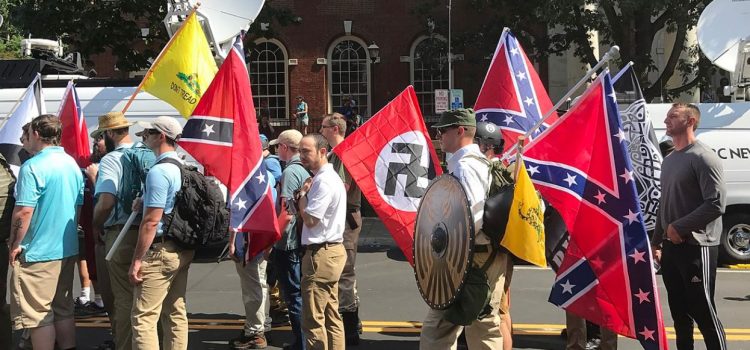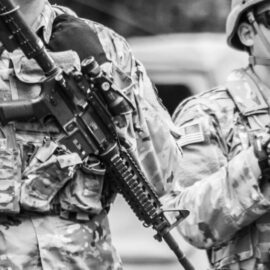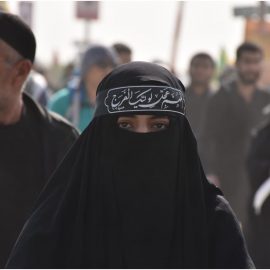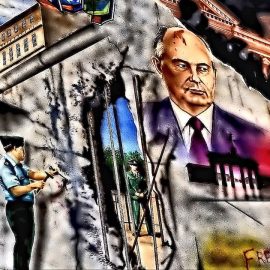

This article is an excerpt from the Shortform book guide to "Biased" by Jennifer L. Eberhardt. Shortform has the world's best summaries and analyses of books you should be reading.
Like this article? Sign up for a free trial here .
What happened during the 2017 Charlottesville “Unite the Right” rally? How did this rally mark a cultural shift?
In 2017, the Charlottesville “Unite the Right” rally marked a cultural shift because it was the largest public gathering of white supremacists in decades. Many believe this was partly inspired by the election of Donald Trump and was a prelude to the 2021 Capitol attack.
Continue reading to learn what happened before, during, and after the Charlottesville Unite the Right rally, and what it means for the resurgence of racial bias.
From Implicit Bias to Explicit Racism
In the right circumstances, implicit biases can bubble up to conscious awareness and become explicit racism. This was the case in Charlottesville, Virginia in 2017, when hundreds of white nationalists and neo-Nazis descended on the campus of the University of Virginia (UVA) before a “Unite the Right” rally. That march and its aftermath marked a fundamental change in the national conversation about race.
In this article, we’ll examine the violent Charlottesville march in more detail, the impact it had on UVA students, and what role universities should play in combating racial bias on campus.
The Unite the Right Rally
The Charlottesville Unite the Right rally was the culmination of growing racial and political tensions across the country. To fully understand the way those events impacted how we think about implicit and explicit bias, we need to understand what happened before, during, and after the rally itself.
Before the Rally
The Charlottesville Unite the Right rally itself was originally meant to protest the proposed removal of a statue of Civil War General Robert E. Lee from a park in downtown Charlottesville. The statue’s proposed removal was part of a city-wide effort to ensure the city’s public memorials depicted the real history of Charlottesville—including its role as a major slave-exporting state. For city officials, removing Confederate symbols was a way of recognizing that legacy and the unimaginable harm it inflicted on generations of black families. (Shortform note: The fate of the Robert E. Lee statue was contested in court for a full five years until April 2021, when the Virginia Supreme Court ruled that the city could remove the statue as well as a nearby statue of Confederate General Stonewall Jackson.)
The city’s Blue Ribbon Commission on Race, Memorials, and Public Spaces faced enormous backlash from the moment it considered removing the Lee statue. White Virginians argued that the statue represented Southern pride and cultural identity and that Confederate heroes were a symbol of the glory of the Old South. That attitude is an example of the “lost cause theory,” which describes the way many white Southerners draw on the myth of the “glorious lost cause” of the Confederacy as a source of identity and pride. As a result, they take any criticism of Robert E. Lee as a personal affront.
However, the problem with the Lee statue isn’t just that it glorifies the racist values of the Old South. The statue itself wasn’t erected until 1924, nearly 60 years after the Civil War, at a time when the Ku Klux Klan was an active and powerful force in the region. Erecting the statue was an act of intimidation that literally cemented the KKK’s dangerous ideology in Charlottesville under the guise of a war memorial.
| Confederate Monuments Are Symbols of the “Lost Cause” Removing Confederate monuments is a growing trend—in 2020, a report by the Southern Poverty Law Center (SPLC) found that over 160 Confederate symbols were removed from public property, including 71 in Virginia alone (in this case, “symbols” includes physical monuments and graphic images as well as public buildings, parks, and roads named after Confederate figures). However, the same report found that over 2,100 Confederate symbols are still on display across the country, most of which are clustered in the Southern states. The SPLC began tracking displays of Confederate symbols after a white supremacist killed nine black people in a church in Charleston, South Carolina. However, many white Southerners argue that removing these symbols is a way of erasing Southern history. This is a central tenet of the “lost cause” of the Confederacy, which began in the immediate aftermath of the Civil War and became part of the public consciousness through films like Gone With the Wind that glorify Southern antebellum life—slavery included. Many argue that this image of the chivalrous Old South is false, and that it has replaced the brutal historical reality of slavery in the minds of many Southerners.Modern believers in the “lost cause” resist the push to remove Confederate monuments because they believe that the Civil War was more about states’ rights than slavery, that most slaves were kept in humane conditions, and that enslaved people were endlessly loyal to their enslavers. Therefore, they categorically deny that Confederate symbols are symbols of racism. |
During the Rally
To protest removing Confederate statues, various far-right groups descended on Charlottesville as part of the “Unite the Right” rally. The night before the official rally, a group of hundreds of neo-Nazis marched through the University of Virginia’s campus carrying tiki torches and chanting racist and anti-Semitic epithets. Violence erupted when the mob encountered a group of UVA student protestors: The marchers beat students and university administrators with their torches and sprayed mace into the crowd until police arrived on the scene. (Shortform note: In Caste, author Isabel Wilkerson recounts the same events, but with an important bit of added context: The march through UVA’s campus was a reenactment of the 1933 torchlight parade that celebrated Hitler becoming the new chancellor of Germany. The demonstration also invoked images of the Ku Klux Klan, who also marched by torchlight in the 1920s and ‘30s.)
The violence on campus was merely a prologue to the rally itself. On the morning of the rally, before the official rally began, groups of neo-Nazis surrounded a synagogue, shouting “Heil Hitler” as Jewish worshippers held Shabbat service inside. Later, in downtown Charlottesville, hundreds of heavily armed far-right protesters clashed with several thousand counterprotesters. The tension between the groups quickly escalated from shouting to all-out brawling. That violence turned deadly when a self-professed neo-Nazi plowed his car into a crowd of counterprotesters, injuring dozens and killing 32-year-old Heather Heyer.
After the Rally
In November 2017, three months after the deadly rally, Dr. Eberhardt visited the University of Virginia to interview students, administrators, and local government officials about their experiences. Across these interviews, two common themes emerged:
Theme #1: Conflicting Identities
We all have multiple aspects of our identities. When those identities aren’t in conflict, we may not even think about them (for example, you may not give much thought to being both a parent and an employee until work conflicts with family time).
The people of Charlottesville felt this tension of multiplicity acutely in the aftermath of the rally. For example, Eberhardt learned that white students who grew up in the area had to reconcile their liberal politics with their Southern heritage and the racism in their own families and communities. Young white men in particular felt a seismic shift—many of the violent marchers had looked like them, and as a result, classmates and even security officers now looked at them with the mix of fear and suspicion that black men often face everywhere they go.
For students of color, this identity tension arose between how they saw themselves (as carefree college students) and how others might see them (as a hated minority). Where they may have felt mildly uncomfortable in a room full of white classmates before, many students felt acutely unsafe in the rally’s aftermath and were constantly on the alert for potential violence, making it impossible to focus on learning. Additionally, students and faculty members with children had to juggle their identities as activists devoted to protesting injustice with their identities as parents who need to protect their children from a dangerous situation.
| Identity Tension Among Famous People of Color Having conflicting identities is a common experience for people of color. How to Be an Antiracist author Ibram X. Kendi describes the “dueling consciousness” between how people of color see themselves and how others see them. In Becoming, former First Lady Michelle Obama describes a similar feeling of being torn between two worlds as a black woman in the public eye. For mixed-race people like comedian Trevor Noah, this tension is often particularly acute. In Born a Crime, Noah describes growing up in South Africa near the end of apartheid and being seen as an outsider by both white and black kids at school. |
Theme #2: Protecting Free Speech and Preventing Hate Speech
In the rally’s aftermath, many UVA students felt betrayed by the university, which they felt was more concerned about the marchers’ right to free speech than about the safety of black and Jewish community members. This is a common trend: Universities are often skittish about quelling white supremacist uprisings because they fear being accused of violating first amendment rights. Many of the students Eberhardt interviewed reported that this also happened at the classroom level—professors stayed quiet when students made racist remarks in their classrooms because they feared being seen as “pushing an agenda,” putting the burden on non-white students to defend themselves and making it impossible to focus on learning.
That tension between freedom of speech and protecting people from hate speech was also evident in the police response to the rally. Body camera footage shows police officers refusing to get involved when marchers physically attacked counter-protesters; many people Eberhardt spoke to described being rescued from violent attacks by armed Antifa members while police looked on. A later investigation found that the police department’s hesitation was an attempt to manage its public image in the aftermath of a Ku Klux Klan rally the previous month, during which police had given KKK members an armed escort out of the rally before unleashing tear gas into the crowd of counter-protesters. Many people in Charlottesville saw this as yet another example of the city prioritizing freedom of speech over the lives of racial and religious minorities.
| Should Hate Speech Be Protected on Campus? The debate over free speech protections on college campuses is not a new one, but it has changed over time. In the past, college students were often the ones invoking their First Amendment rights in the face of official censorship; now, however, the opposite is often true, with students calling on their universities to ban controversial speakers entirely, which is itself a form of censorship. For many, the push to ban certain speakers is an alarming trend. In The Coddling of the American Mind, authors Greg Lukianoff and Jonathan Haidt argue that universities have become “fragile” environments that cater to students’ opinions at the expense of true academic freedom. They argue that universities should prioritize freedom of speech over issues of social justice because the purpose of a university is to discover truth, not to protect people’s feelings. Other writers argue that censorship is not only morally wrong, it also robs majority students of the chance to experience just how hateful racist and anti-Semitic rhetoric can get, which could spur them on to activism. On the other hand, allowing unrestricted hate speech on campus can have serious consequences, like the violence that erupted on the University of Virginia campus the night before the Charlottesville rally. The threat of violence also means that universities have to spend more on security for controversial speakers—one month after the Unite the Right rally, the University of California Berkeley spent $800,000 on security for a 15-minute speech by alt-right commentator Milo Yiannopoulos. Ultimately, federal law protects full freedom of expression on public campuses, and most students and scholars agree that universities should promote free discussion by hosting a variety of speakers. However, that doesn’t mean racist or hateful speech should go completely unchallenged. The Southern Poverty Law Center released a guide for students to respond to alt-right campus speakers; they recommend hosting an alternative event that promotes inclusive values rather than protesting controversial speakers directly. And legal experts recommend that university administrators focus on building strong campus communities and avoid using the First Amendment as an excuse to ignore the real pain their students may be feeling. |
The Resurgence of Explicit Racial Bias
The Charlottesville march was the largest public gathering of white supremacists in decades, but the hatred that fueled it had been simmering beneath the surface for generations. For social scientists, the most shocking part of the march wasn’t the hateful words the marchers said but the brazenness with which they said them. Before that point, white people abided by an unspoken social contract of “don’t ask, don’t tell” when it came to racism, allowing progressive people to avoid the discomfort of talking openly about race and prejudiced people to avoid the social taboo of blatant racism. However, the Charlottesville rally made it clear that the old rules no longer applied—suddenly, the social cost of being openly racist wasn’t so terrible.
(Shortform note: Virginia’s governor at the time of the rally, Terry McAuliffe, summed up the resurgence of explicit racism this way: “They used to wear hoods. They used to do it at night. They don’t wear hoods anymore, and they do it in broad daylight.”)
What prompted that change? Experts think that the sudden resurgence in white nationalism and explicit racial bias happened because suddenly, white people are “outnumbered.” The population is diversifying more and more, and white people (particularly white men) are no longer the unquestioned rulers of society. No longer being the dominant social group makes many white people feel threatened, so they embrace white supremacist ideas more openly as a coping mechanism. Unfortunately, that resurgence of explicit racial bias is likely to continue as white people are projected to become a racial minority in the United States somewhere around the year 2050.
| “Unite the Right” Was a Prelude to the 2021 Capitol Attack The Unite the Right rally marked a cultural shift in part because it was the largest public gathering of white supremacists in decades. The rally was organized by members of the alt-right movement, which is a banner term for a variety of groups that share a common white supremacist ideology. According to the Anti-Defamation League (a nonprofit that studies discrimination and anti-Semitism), the alt-right’s move from online activism to in-person demonstrations like the Unite the Right rally was partly inspired by the election of Donald Trump. Four years later, on January 6th, 2021, pro-Trump extremists stormed the United States Capitol building in an attempt to stop Congress from certifying Joe Biden’s victory in the 2020 presidential election. The documentary Trump’s American Carnage traces the roots of this attack back to Charlottesville and argues that the president’s failure to condemn white supremacy in Charlottesville emboldened the far-right groups who ultimately participated in storming the capitol (indeed, many of the same protestors attended both events). |

———End of Preview———
Like what you just read? Read the rest of the world's best book summary and analysis of Jennifer L. Eberhardt's "Biased" at Shortform .
Here's what you'll find in our full Biased summary :
- How implicit bias forms in the brain
- Whether or not bias training actually works
- Why there has been a sudden resurgence in white nationalism






